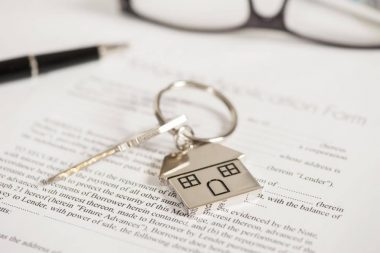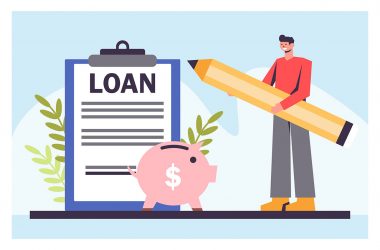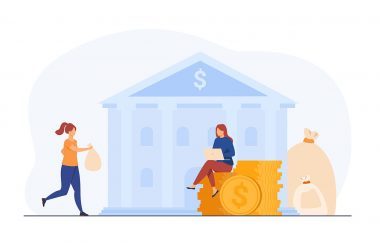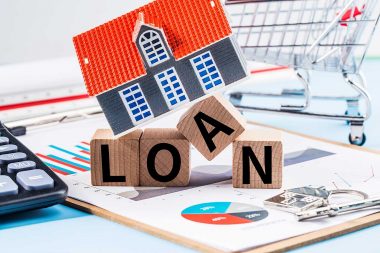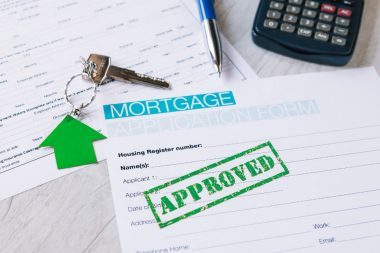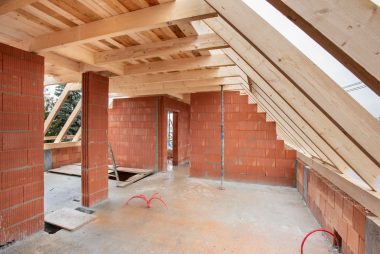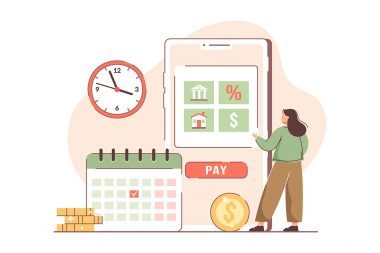Notify me when rates drop
Keep updated and never miss an opportunity
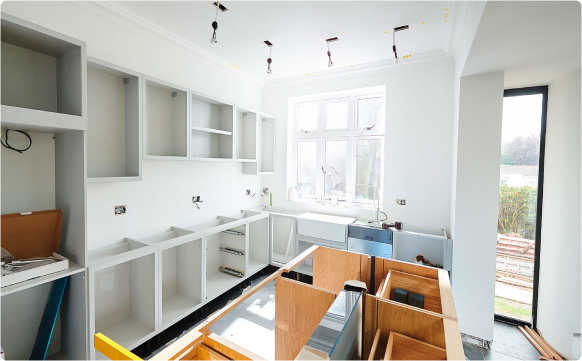
What is a Home Equity Line of Credit
A home equity line of credit aka HELOC is a loan in which the lender agrees to lend a borrower maximum amount, to be repaid within an agreed period or term. The collateral is the borrower's equity in their house.
In a nutshell, a home equity line of credit (HELOC) loan is a type of loan that allows homeowners to borrow money using their home equity as collateral. Home equity is the difference between the value of the home and the outstanding balance on the mortgage. HELOC loans are typically used for home improvements, debt consolidation, or major purchases such as a new car or college tuition fees.
Because the loan is secured by a house, such a loan type typically has lower interest rates than unsecured loans, making them an attractive option for borrowers who need to borrow money for a significant expense.
With a HELOC loan, borrowers can access funds as needed, up to the approved credit limit, and only pay interest on the amount borrowed. As the borrower pays off the loan, the credit line becomes available again, providing ongoing access to funds as needed.
Think of a HELOC loan as being similar to using a credit card. Here, your lender will decide upon a maximum loan amount and you can take out as much money as you need — until you reach the limit. And, you make monthly repayments to pay back your loan. But the good news is that the interest rate on a HELOC is far lower than it is on a credit card. You can borrow up to 85% of the value of your home minus the amount you own.
Here’s the simple math:
Suppose you have a $600,000 home with $400,000 balance on your first mortgage and your lender gives you access to up to 85% of your home’s equity. Your HELOC limit will come out to be $110,000.
$600,000 x 85% = $510,000
$510,000 – $400,000 = $110,000
If you’re a responsible homeowner with equity available against your house, a home equity line of credit is best for you. It can provide you with secured financing options with lower interest rates. The flexible draw period gives you the ease of paying back the loan as and when you desire.
What are the common jargons a HELOC lender uses?
Loan interest rate (APR): The annual rate (in percentage) for the line of credit.
Draw period: Fixed time during which you can access funds from your home equity line of credit. It is typically for 10 years plus 1 month from the date you open the account. Your annual percentage rate (APR) during the draw period is variable and tied to the Prime Rate (PR) unless you choose to take a fixed-rate advance. In this case, the payment is more predictable and stable.
End of draw: The date on which your draw period ends and you can no longer access funds from your home equity line of credit.
Repayment period: After your draw period ends, the repayment period begins. No additional funds can be borrowed and the balance must be paid off over the remaining term. You may keep the same payment structure as that of the draw period — principal-plus-interest payment, at a variable rate.
Current balance: The outstanding balance on your line of credit.
Payoff goal: Your time goal (in months) for paying off the line of credit.
Current monthly payment: The amount of money you are currently paying monthly. Please note that this is the exact amount you’re paying NOT the minimum payment amount
Annual fee: Any annual fee the lender may charge for the line of credit.
How to use the Kukun HELOC loan calculator?
The HELOC calculator is easy to use and gives instant, reliable results. All you have to do is fill in your zip code, the approximate home value, the loan amount, the mortgage balance amount, your credit score, and a few other details. The HELOC loan calculator will estimate how much you might be able to borrow against your home equity.
What is a HELOC loan used for? Are they all wise decisions?
With a HELOC, you have the freedom to use the funds for any purpose. However, it's important to have some guidelines on how to utilize the money wisely. Here are some of the things you may use HELOC for. And, we’ll help you see whether they make financial sense or not:
- Home improvements and repairs: This is one of the most sensible uses of your HELOC funds, as it can add value to your home and improve its functionality. Home improvement projects such as a kitchen remodel or a bathroom renovation will definitely get you a high return on investment (ROI). However, you should be wary of expensive home additions such as a swimming pool or a tennis court that may not fully recoup the investment.
- Consolidating debt: It could be a good idea to swap out high-interest credit card debt for a cheaper HELOC debt, but only if you won't run up more debt in the future. Otherwise, you'll be left with less home equity and more credit card balances.
- Property investment: It's probably not a wise idea to use your HELOC to invest as the interest rate is likely to be higher than the potential investment returns. You can take a call by consulting a real estate expert for your specific financial situation.
- Repaying a student loan: This is a gray area, but it can make sense to pay off high-interest private student loans with your HELOC. However, there's no hurry to pay down federal loans as they have lower rates and more financial securities.
- Going on vacation or buying expensive electronics: This is NOT a good use of your HELOC funds as these items won't appreciate in value like real estate investment. It's better to delay these purchases until you have the funds to pay for them outright.
What is the eligibility criteria for HELOC?
To qualify for a HELOC, you need to have available equity in your home. The amount you owe against your home must be less than the actual value of your home.A lender generally looks at a few aspects of a borrower before sanctioning HELOC:
Prerequisites for sanctioning HELOC
Credit History
Record of timely repayments in the past
Citizenship
Legal US resident
Employment History
A permanent job with a steady source of income
Bank Account
Verifiable account with a reputed bank
Monthly Debts
A low debt-to-income ratio of 43%, or possibly up to 50%
Credit Score
620 or higher (300-575:Poor, 580-669:fair, 670-739:good,740-799:very good, 800-850: exceptional)
How does a HELOC work?
This open, revolving credit line functions similarly to a credit card, allowing you to use it as needed. However, HELOCs offer advantages over credit cards such as higher credit limits and lower interest rates, typically in the single digits, compared to the 16 percent or higher rates associated with carrying a balance on a credit card.
Moreover, HELOCs have variable interest rates and an initial draw period that can span up to a decade, during which you make interest-only payments. After the draw period, a repayment period begins, requiring payment of both principal and interest.
Keep in mind that it’s important to exercise caution when using a line of credit to avoid over-extending yourself and the possibility of fluctuating payments in the future.
The borrower can draw any amount of funds up to the credit limit. Typically, the funds are accessed via a check, but sometimes the creditor issues a credit card to use in order to draw funds.
A borrower can apply for a HELOC loan in addition to an existing mortgage. This is convenient when they do not want to refinance or pay off an existing mortgage. If the term of HELOC is 15 years, the draw period will be the initial 10 years. During the draw period, monthly repayments are usually interest-only payments. These will depend upon the outstanding balance and current interest rate. The borrower can always pay more than the monthly interest to reduce the balance. Word of caution: It can be tempting to have access to a large amount of money, but repaying the loan needs to be planned well. You don't want to find yourself in a soup by falling behind on your payments, right?
Find the right loan
We can help you identify the loan that best fits your needs. Please answer a few questions to help us understand you and the financial needs of your renovation project. It's quick and easy!
What are the key features of HELOC?
Variable interest rate
HELOC has variable rate loans that are tied to short-term interest rates such as the Prime Rate. The rate can change daily as short-term rates fluctuate, but can usually be set monthly. In some cases when borrowers have strong qualifications and good collateral, they can obtain rates below the PR.
Actual interest rate charged
The amount is typically PR plus a fixed margin of 1% or 2%. The actual rate depends on the terms of the HELOC, and the borrower’s qualifications.
Home equity line of credit term
A HELOC term can be from 10 to 30 years. As explained, the draw period will be less than the total term. During the draw period, the borrower can draw funds up to the credit limit as needed, and repay as desired.
Balloon payment
Which means that if the balance is not paid off by the end of the term, the borrower will have to pay an amount equal to the outstanding balance and interest due as final payment.
Amortization schedule
The creditors may spread the payments over the remaining term -- after the draw period -- and require a monthly principal and interest payment. The monthly payments will be the amount needed to pay off the balance over the remaining period at the current interest rate, and the payment will adjust as interest rates change.
What are the pros and cons of a home equity line of credit?
The pros
- Ease of financing home renovation projects.
- Provides a great return on your investment.
- Adds equity to your home.
- Provides many financial options to choose from in order to remodel your home.
- The borrower is only charged interest on the amount of funds being used, as opposed to the total credit limit.
- Flexibility in terms of accessing and repaying funds as and when needed to manage interest expense.
- Borrower needs to only pay for portion of funds used.
- Lower interest-only payments during draw period.
- Easier, faster approval process than conventional and government loans.
- Lower rates than other forms of credit.
- Low upfront closing costs and fees.
- Allows borrower to keep existing 1st mortgage.
- Interest may be tax deductible as per IRS. For a better clarification, do seek advice of a tax professional.
- No prepayment/repayment penalties.
- Readily available loans from multiple sources in the market.
The cons
- Unpredictable monthly payments due to variable interest rates.
- Requires mortgage insurance which increases monthly payment and loan balance.
- Extra paperwork with full loan application, borrower documentation, appraisal and renovation details.
- Obtaining funds may take up to 45 working days.
- Borrower needs to have all details ready including cost estimates, selection of contractors selected before closing.
- Cannot be used on properties currently under construction.
- A dicey proposition if you have an unstable income or cannot afford upfront costs such as transaction fees or annual lender fees for an open HELOC.
- If your home value falls, you may end up owing more than your home’s value.
How to refinance your HELOC into a home equity loan?
Over time, HELOC payments have a tendency to become more expensive due to two reasons. Firstly, the interest rates for HELOCs are adjustable and can fluctuate periodically. If the interest rates increase, the monthly payments for HELOCs could potentially become larger.
Secondly, when the repayment period begins after the draw period ends, borrowers are required to pay back both the principal and interest. This sudden increase in the monthly payments can be a surprise to borrowers who had been making interest-only payments for the initial 10 or 15 years. The new HELOC payment can even double or triple what the borrower had been paying for the previous decade.
Many borrowers think of refinancing their HELOC. Here are two options available to them:
- Instead of using a HELOC with a variable interest rate, borrowers can opt for a home equity loan with a fixed rate to pay off the HELOC. This strategy can help them avoid rate adjustments. But, they will need to cover the closing costs associated with the new loan.
- Another option is to apply for a new HELOC to replace the old one. This way, the borrower can keep the line of credit open while avoiding principal and interest payments. If your credit score has improved since you took out the original HELOC, you may even be able to qualify for a lower interest rate.
Home equity loan vs. HELOC: What is the difference?
Home equity loans and HELOCs are two types of loans that are secured by the value or equity of your home. They are both categorized as second mortgages. However, the key contrast between the two lies in the way you get the funds. Home equity loans provide a lump sum of money, whereas HELOCs offer a revolving line of credit – which can be accessed as per your requirement.
What is the difference between HELOC and mortgage refinance?
When it comes to HELOC vs mortgage refinance, you have to understand that while both use home equity for renovation funding, there are some vital differences. By opting for a cash-out refinance, you can replace your current mortgage with a larger one, thereby receiving a lump sum of cash equal to the difference between the new and old mortgage balances at the time of closing. On the other hand, a HELOC might be a better option if you're satisfied with your current mortgage terms and would prefer not to obtain a new mortgage. Furthermore, a HELOC usually involves lower fees and closing costs than a cash-out refi.
What is the best way to pay off a HELOC?
HELOCs operate more like credit cards and differ from home equity loans. The amount of credit extended by the lender is based on various factors, such as credit history and home equity. You are only obligated to repay what you borrow, so if you are granted $50,000 but only use $25,000, you will only owe $25,000.
During the draw period, which can last for 10 to 15 years, many HELOCs allow you to make interest-only payments. After this period ends, you must begin making principal and interest payments. However, if you delay paying the principal, HELOCs can become a financial burden. Therefore, it is recommended that you make additional monthly payments on the principal if possible. However, before doing that, you should find out if there are any prepayment penalties.






